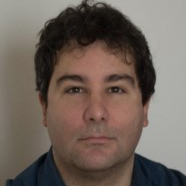Vitamin C and Cancer
A special issue of Antioxidants (ISSN 2076-3921). This special issue belongs to the section "Health Outcomes of Antioxidants and Oxidative Stress".
Deadline for manuscript submissions: closed (15 October 2023) | Viewed by 2158
Special Issue Editors
Interests: vitamin C; cancer; bacteriophages; nutrition; oncogenesis; viruses; infectious diseases
Interests: vitamin C; cancer; glioblastoma; pancreas carcinoma; membrane transporters; oxidative stress
Interests: vitamin C; cancer; glioblastoma; malignant melanoma; pancreas carcinoma; flavonoids; epigenetics; senescence; organoids
Interests: natural compounds; micronutrients; vitamin C; epigenetics; HDAC inhibitors; immunomodulators; hepatocellular carcinoma; malignant melanoma; glioblastoma; pancreas carcinoma; hop compounds; NK cells; senescence
Special Issue Information
Dear Colleagues,
Vitamin C is a very well-known water-soluble vitamin that acts as an antioxidant in physiological concentrations. Among others, it is also involved in collagen formation, the synthesis of neurotransmitters, and tissue repair. Unlike most animals, it cannot be synthesized by humans and is accordingly an essential micronutrient.
Cancer patients in advanced stages often show very low, sometimes almost scurvy-like, vitamin C plasma levels, and studies are accumulating that indicate the efficacy of parenteral high-dose vitamin C in the context of the therapy of various tumor entities. This Special Issue will now critically review the suitability of vitamin C in both tumor prevention and tumor therapy. Any original papers, review articles, or short communications that help clarify the possible advantages and disadvantages of vitamin C in this context, whether by elucidating the underlying mechanisms or efficacy in vitro, in vivo, or in clinical trials, are welcome.
Dr. Luigi Marongiu
Dr. Olga Renner
Dr. Markus Burkard
Prof. Dr. Sascha Venturelli
Guest Editors
Manuscript Submission Information
Manuscripts should be submitted online at www.mdpi.com by registering and logging in to this website. Once you are registered, click here to go to the submission form. Manuscripts can be submitted until the deadline. All submissions that pass pre-check are peer-reviewed. Accepted papers will be published continuously in the journal (as soon as accepted) and will be listed together on the special issue website. Research articles, review articles as well as short communications are invited. For planned papers, a title and short abstract (about 100 words) can be sent to the Editorial Office for announcement on this website.
Submitted manuscripts should not have been published previously, nor be under consideration for publication elsewhere (except conference proceedings papers). All manuscripts are thoroughly refereed through a single-blind peer-review process. A guide for authors and other relevant information for submission of manuscripts is available on the Instructions for Authors page. Antioxidants is an international peer-reviewed open access monthly journal published by MDPI.
Please visit the Instructions for Authors page before submitting a manuscript. The Article Processing Charge (APC) for publication in this open access journal is 2900 CHF (Swiss Francs). Submitted papers should be well formatted and use good English. Authors may use MDPI's English editing service prior to publication or during author revisions.
Keywords
- ascorbate
- vitamin C
- cancer therapy
- cancer prevention
- antioxidants
- prooxidants
- oxidative stress
- epigenetic activity









